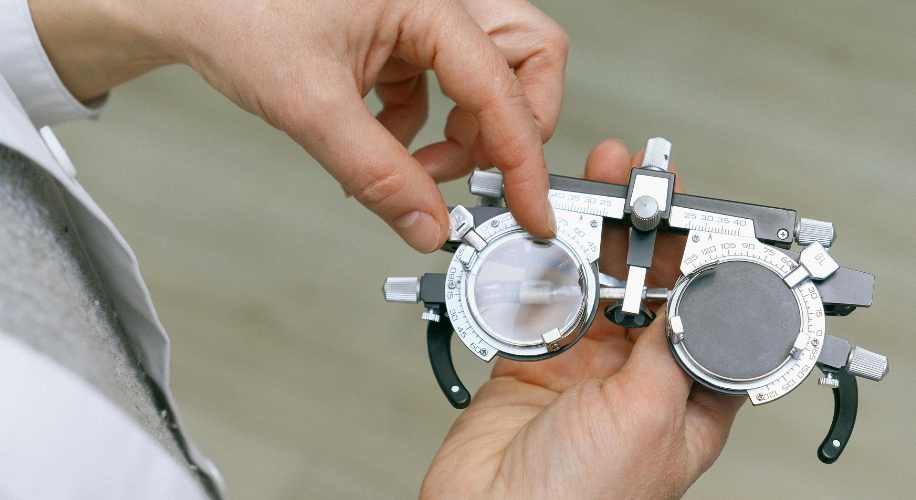Decoding Optometrist Acronyms and Abbreviations
- BY Catherine Ong
- IN Eye Care
You’re handed your prescription with a bunch of numbers and letters on it and you don’t know how to read it. Understanding the language of optometry can be a daunting task. With a myriad of acronyms and abbreviations, it can be like trying to decode a secret language. However, with a little help, you can grasp these terms and actively participate in conversations about your eye health. This article will break down and explain common optometrist acronyms and abbreviations.

Common Terms in Optometry
Some of the most frequently used terms in the sphere of optometry are related to prescriptions for glasses or general eyeglasses measurements. Here’s what some of the most common terms mean:
- OD: This stands for “oculus dexter,” which is Latin for right eye.
- OS: This represents “oculus sinister,” which translates to left eye.
- SPH: This abbreviation stands for “sphere,” which relates to the degree of nearsightedness or farsightedness you have. If you see a minus (-) before the number, this indicates you are nearsighted. Conversely, a plus (+) indicates you’re farsighted.
- CYL: This is short for cylinder and it measures the degree of astigmatism, a common condition where the eye isn’t perfectly round, causing blurred or distorted vision.
- ADD: This number is for patients who have presbyopia, or difficulty focusing on near targets due to decreased focusing power of the crystalline lens. This number is “added” to your sphere power to determine your near prescription.
- PRISM: Though not an acronym, you may find a number for prism on your prescription if you have a misalignment of your eyes. This will shift the image horizontally and/or vertically to alleviate symptoms of misalignment.
- PD: Short for “pupillary distance,” this measures the distance between your pupils, which is crucial when fitting glasses correctly. This helps place the optical center of your glasses in front of your eyes.

Photo by Anna Shvets
Understanding Vision Conditions
There are several vision conditions that you may come across when discussing eye health. Here’s a quick guide:
- Nearsightedness: Formally known as myopia, this term refers to the condition where you can see objects nearby clearly, but objects far away are blurred.
- Farsightedness: Hyperopia, or farsightedness, is the opposite of myopia. If you’re farsighted, distant objects are typically clear, but close-up objects may be blurry.
- Astigmatism: Astigmatism is a condition where the eye isn’t perfectly round, but instead more oval shaped, leading to blurred or distorted vision due to light focusing at multiple points in your eye.
- Presbyopia: Presbyopia is a condition associated with age that makes it difficult to focus on near objects. This condition typically presents in your early 40’s and can manifest as eye strain especially with near targets. Oftentimes, a pair of reading glasses can be just the fix!

Photo from Pexels by Gustavo Fring
More than Just Vision Correction
Now that you’re equipped with the tools needed to decipher your glasses prescription, you can be confident the next time you receive your prescription at your eye exam. Getting annual eye exams is important not only for maintaining clear vision, but also for ensuring optimal eye health. Once you have received your prescription, elevate your style game and shop Zenni for your next stylish and affordable pair of eyewear!
